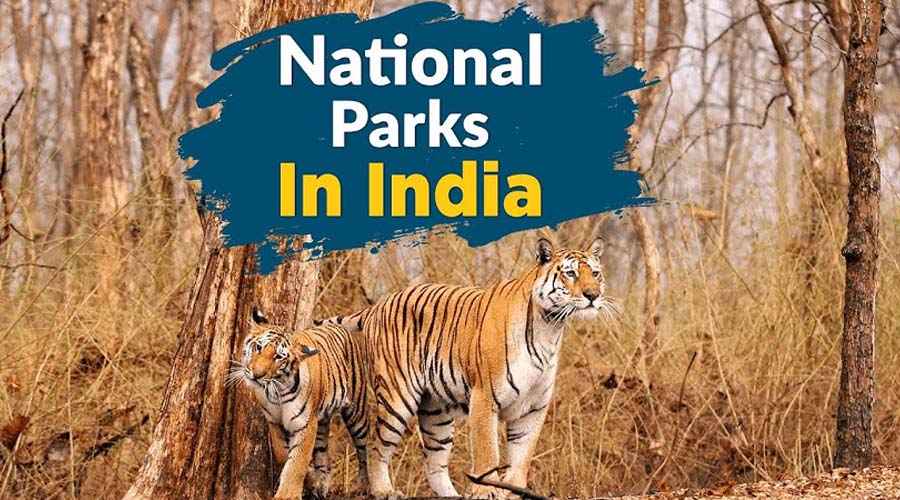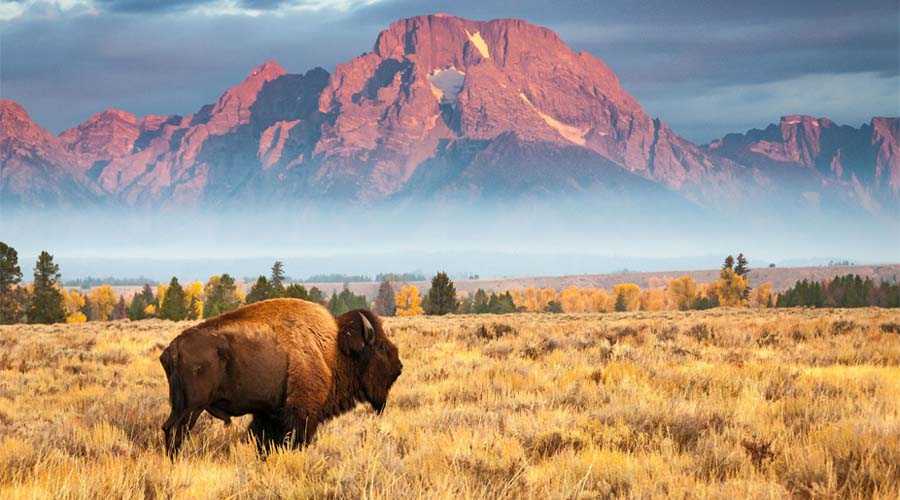India is home to a vast range of ecosystems, from icy mountains and arid deserts to tropical forests and coastal wetlands. National parks form the backbone of India’s conservation efforts, protecting endangered species and preserving landscapes of immense ecological value. Among the 100+ national parks spread across the country, some stand out for their sheer size. Let’s explore the top 10 largest national park in India, each a natural treasure in its own right.
1. Hemis National Park, Ladakh (4,400 sq. km)
The crown jewel of India’s national parks, Hemis is the largest by area. Nestled in Ladakh, this cold desert park is famous worldwide as the Snow Leopard Capital. Its rugged mountains, barren valleys, and sparse vegetation create a dramatic landscape. Apart from snow leopards, it shelters Tibetan wolves, Asiatic ibex, Himalayan marmots, and bharals (blue sheep). The park’s remote monasteries, like Hemis Monastery, add cultural richness. Hemis is a paradise for trekkers and wildlife enthusiasts seeking the thrill of spotting elusive high-altitude predators.
2. Desert National Park, Rajasthan (3,162 sq. km)
Stretching across the Thar Desert, this park showcases the beauty of India’s arid ecosystems. Despite its barren look, the Desert National Park teems with life. It is one of the last strongholds of the endangered Great Indian Bustard, Rajasthan’s state bird. Reptiles, foxes, desert cats, and migratory birds thrive here. Sand dunes, salt lakes, and rocky outcrops make the park visually stunning. For those curious about prehistoric life, the park also has areas with dinosaur fossil remains dating back 180 million years.
3. Gangotri National Park, Uttarakhand (2,390 sq. km)
Located in the upper reaches of the Garhwal Himalayas, Gangotri National Park is named after the sacred river Ganga. Its alpine meadows, coniferous forests, and towering glaciers create a serene landscape. Wildlife includes snow leopards, Himalayan tahr, musk deer, and black bears. Pilgrims visit the region for the holy Gangotri shrine, while adventurers come for trekking routes like the Gaumukh Glacier trail. This park beautifully merges spiritual significance with natural splendor.
4. Namdapha National Park, Arunachal Pradesh (1,985 sq. km)
Tucked away in northeastern India, Namdapha is known for its exceptional biodiversity. The park’s altitude ranges from 200 meters to over 4,500 meters, supporting everything from tropical rainforests to alpine meadows. Remarkably, it is the only park in India that shelters the four big cats—tiger, leopard, snow leopard, and clouded leopard. Apart from big cats, it is home to Hoolock gibbons, Asiatic black bears, and hornbills. Dense vegetation, misty mountains, and rushing rivers make Namdapha an explorer’s dream.
5. Khangchendzonga National Park, Sikkim (1,784 sq. km)
A UNESCO World Heritage Sites, this park is dominated by Mount Khangchendzonga, the third-highest peak in the world. Sacred to local communities, the park blends natural grandeur with spiritual significance. Its landscapes include glaciers, valleys, and lush forests. Wildlife like snow leopards, red pandas, musk deer, and Himalayan tahr thrive here. The park also protects alpine flora and medicinal plants. Trekking here offers breathtaking views of the Himalayas and glimpses into Sikkim’s cultural heritage.
6. Guru Ghasidas (Sanjay) National Park, Chhattisgarh
This lesser-known gem lies in central India, forming a wildlife corridor between Madhya Pradesh and Chhattisgarh. The Guru Ghasidas National Park, once part of Sanjay National Park, is a habitat for tigers, leopards, striped hyenas, sloth bears, and wild dogs. Dense sal forests and meadows provide excellent ecosystems for herbivores like chital, sambar, and nilgai. It holds importance for tribal communities and is being developed under conservation programs to strengthen India’s central tiger reserves.
7. Sundarbans National Park, West Bengal (1,330 sq. km)
World-famous for its mangrove forests, the Sundarbans is a UNESCO World Heritage Site and one of the most iconic national parks of India. It is home to the Royal Bengal Tiger, uniquely adapted to swim in tidal waters. Other species include estuarine crocodiles, fishing cats, and olive ridley turtles. Intersected by a labyrinth of rivers and creeks, the park is also a sanctuary for migratory birds. Its fragile mangrove ecosystem plays a crucial role in protecting coastal areas from cyclones and erosion.
8. Indravati National Park, Chhattisgarh (1,258 sq. km)
Another key park in central India, Indravati is known for its dense forests and rich wildlife. It is one of the few parks where the endangered wild buffalo is found. Tigers, leopards, sloth bears, and dholes roam freely here. The park is crisscrossed by rivers and valleys, creating diverse habitats. Tribal culture adds a unique dimension to the region, making it both culturally and ecologically significant.
9. Papikonda National Park, Andhra Pradesh (1,012 sq. km)
Located along the Godavari River, Papikonda boasts tropical forests and rolling hills. Elephants, leopards, sambar deer, and a variety of birds thrive here. The riverine landscape adds to its charm, making it an attractive spot for eco-tourism. Papikonda is also known for its rich bird diversity, including species like the Malabar pied hornbill and Indian pitta. Its proximity to tribal settlements highlights the delicate balance between conservation and local livelihoods.
10. Simlipal National Park, Odisha (1,194 sq. km)
Named after the red silk cotton trees (Simul) that bloom here, Simlipal is part of the UNESCO World Network of Biosphere Reserves. It is home to tigers, elephants, gaurs, and leopards. Waterfalls like Barehipani and Joranda add natural beauty to the park. Rich in both flora and fauna, Simlipal supports medicinal plants and orchids as well. The park also carries cultural importance for local tribal groups who share their lives with the surrounding wilderness.
Conclusion
India’s largest national parks are not just vast stretches of land but living museums of biodiversity. From the cold deserts of Ladakh to the tropical mangroves of the Sundarbans, each park tells a story of adaptation, resilience, and coexistence. Together, these top 10 national parks safeguard endangered species, preserve ecosystems, and inspire humans to protect the natural world. Exploring them is like journeying through the ecological soul of India.

